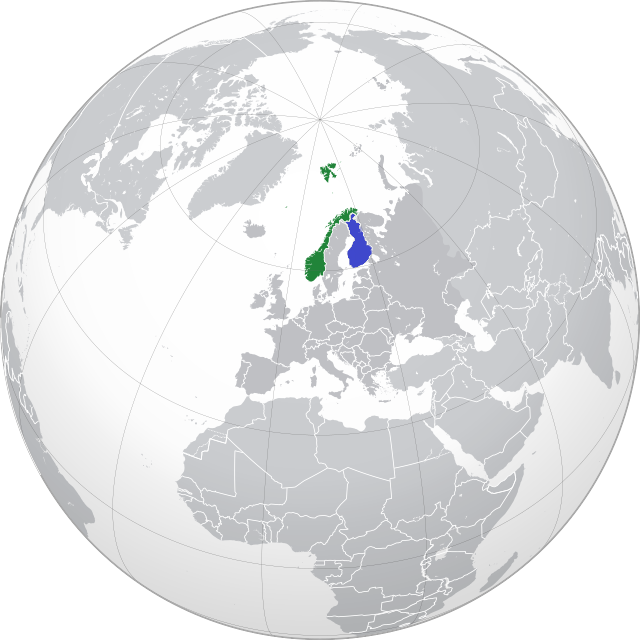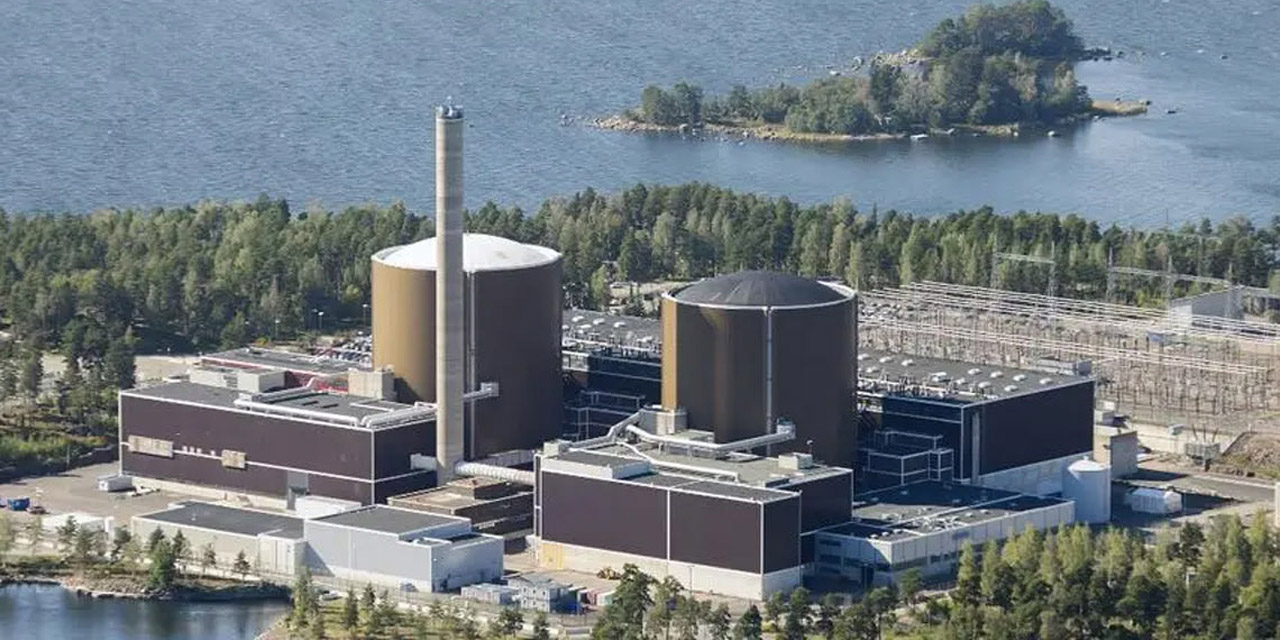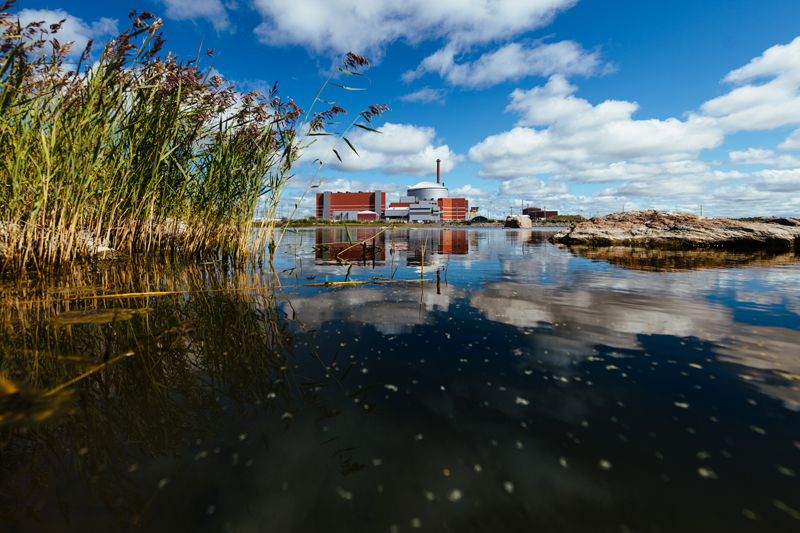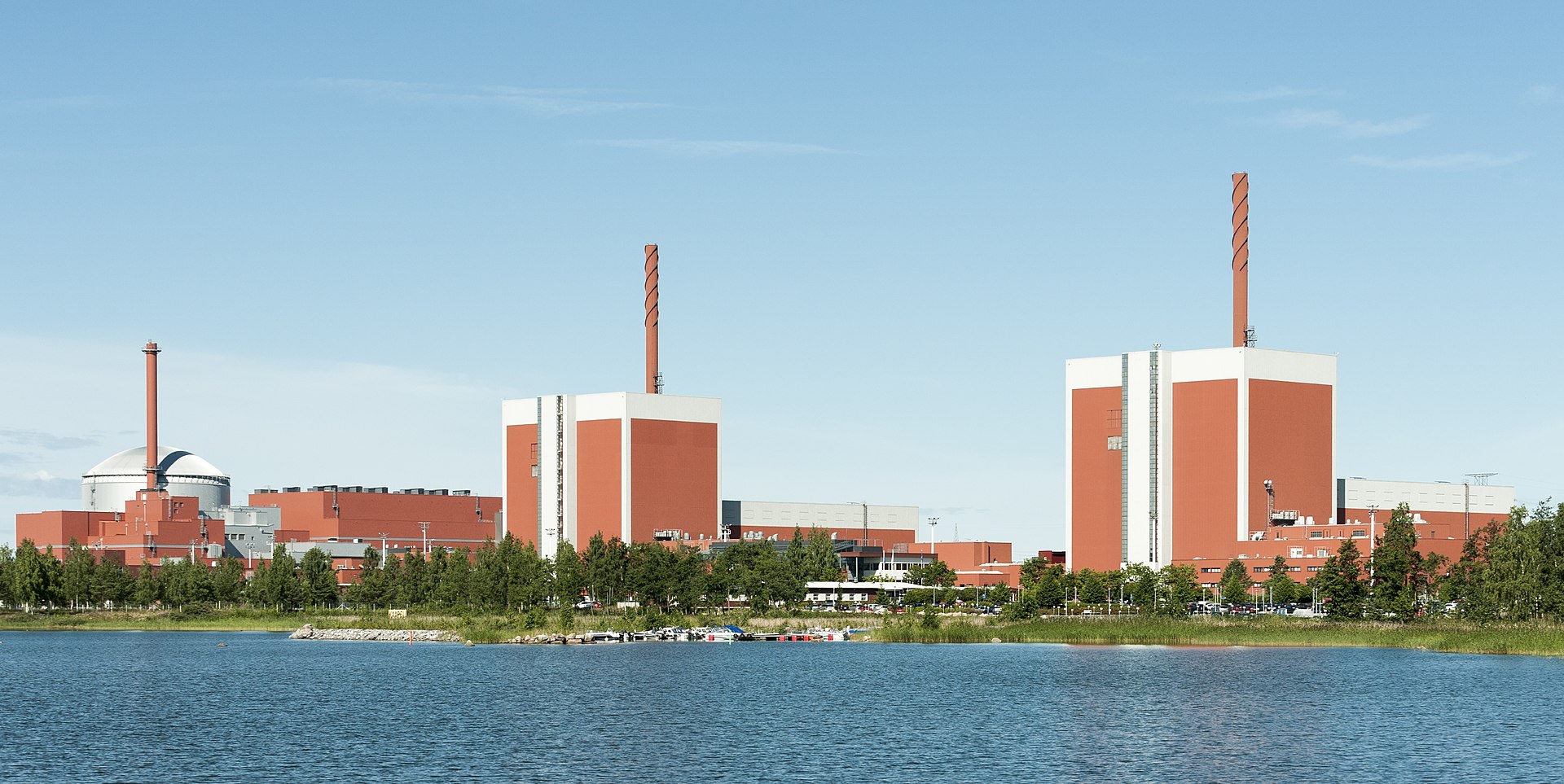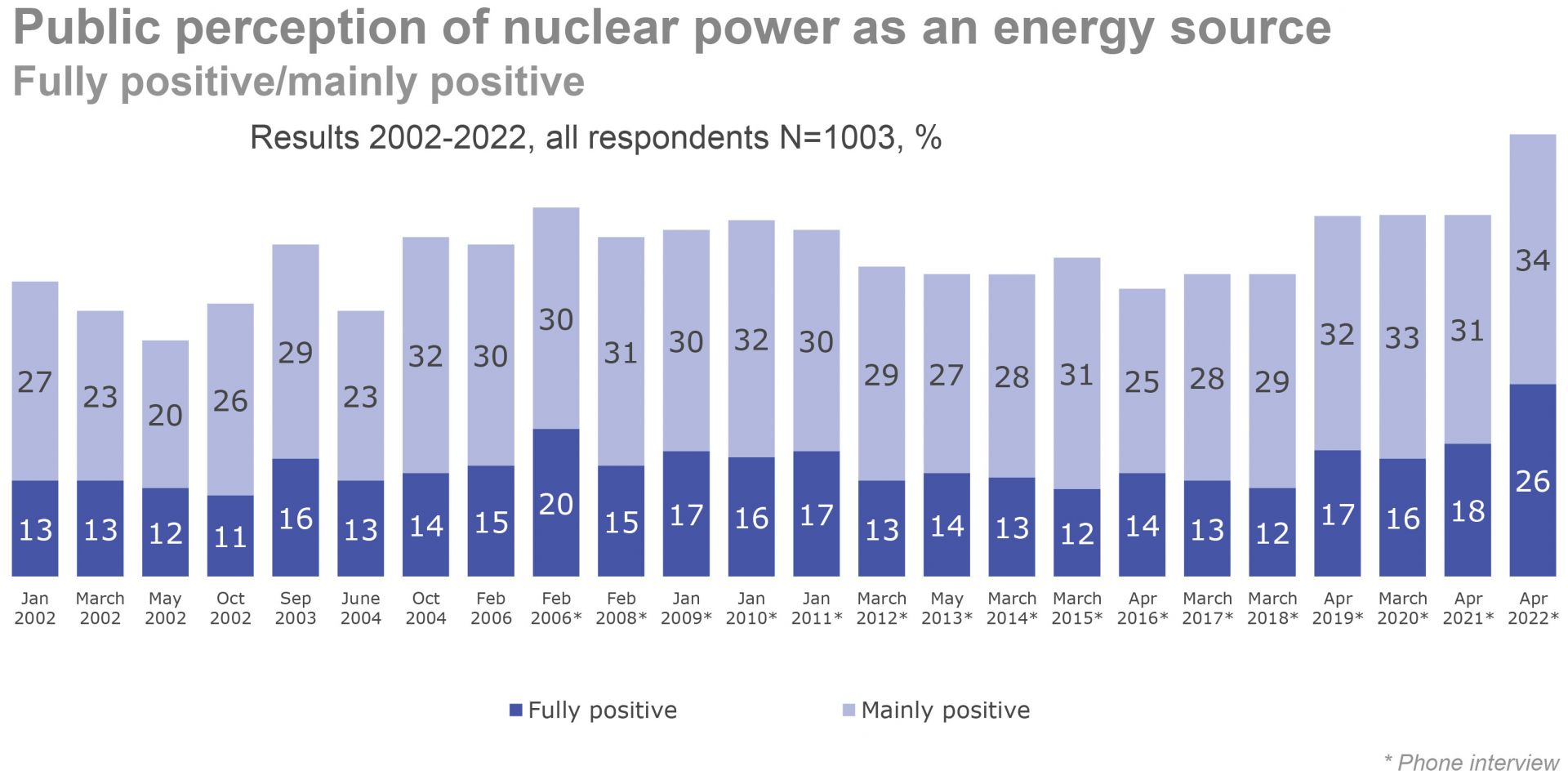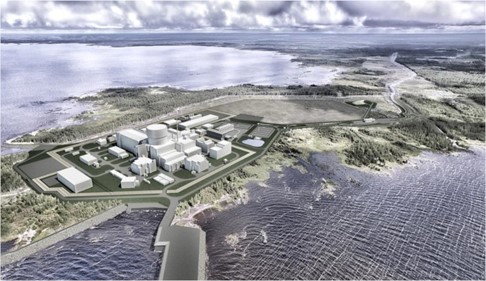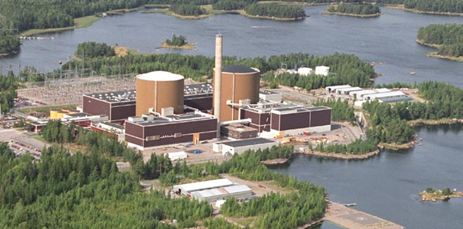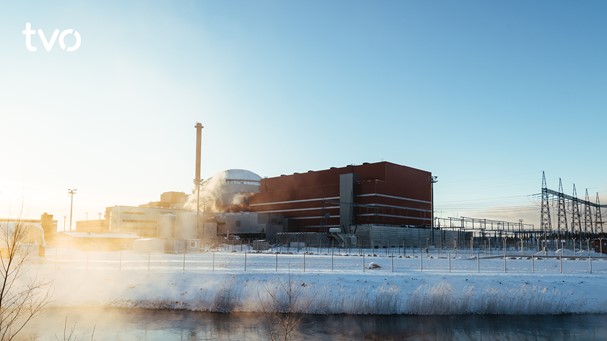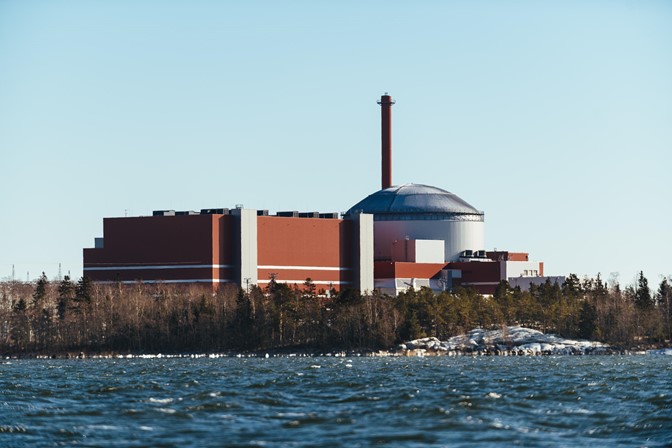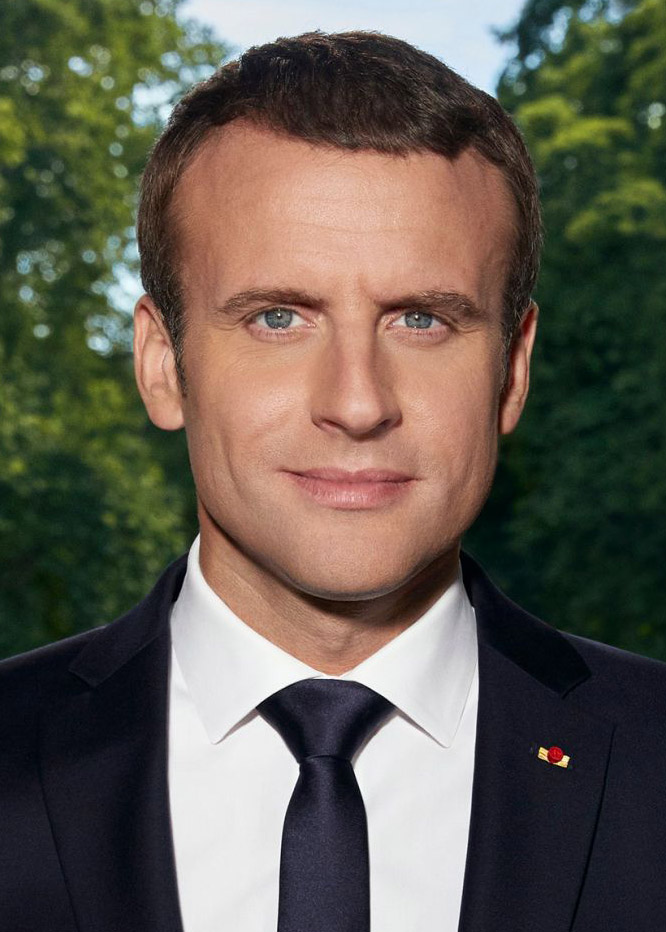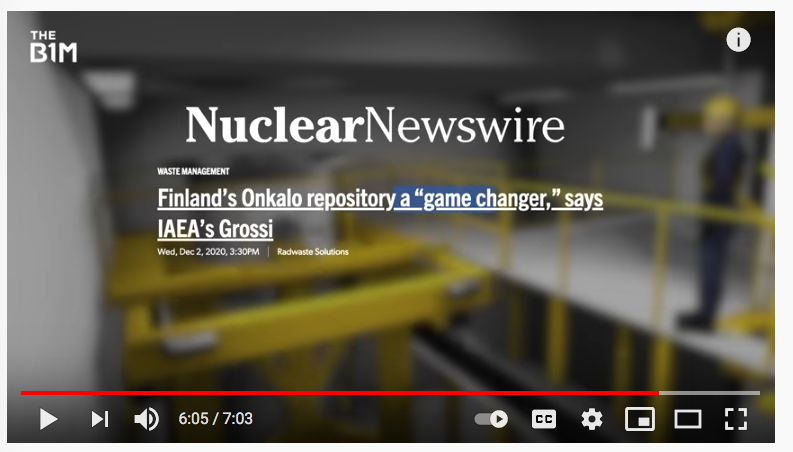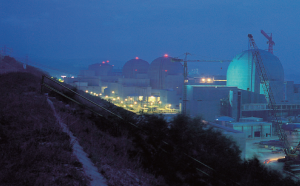Seaborg cofounder Eirik Eide Pettersen (left) and Norsk Kjernekraft CEO Jonny Hesthammer at a letter-of-intent signing ceremony. (Photo: Seaborg)
Denmark’s Seaborg Technologies and Norsk Kjernekraft (aka Norwegian Nuclear Power) have signed a letter of intent to investigate the possibility of deploying Seaborg’s 100-MWe compact molten salt reactor (CMSR) in Norway.
A map of Norway (green) and Finland (blue). (Image: Wikimedia Commons)
Consulting company TVO Nuclear Services (TVONS), a subsidiary of Teollisuuden Voima Oyj, owner and operator of Finland’s three-unit Olkiluoto nuclear plant, has signed a memorandum of understanding with Norsk Kjernekraft, aka Norwegian Nuclear, a firm established last July with the goal of bringing small modular reactors to power reactor–deprived Norway.
A June 27 announcement from TVO said the new MOU provides the Norwegian firm with “access to the know-how and experience of one of the world’s best-known nuclear power companies” and stressed TVO’s 60 percent ownership of Posiva, the company responsible for the disposal of Finland’s spent nuclear fuel. “Posiva has successfully built the world’s first final disposal facility for high-level nuclear waste,” TVO stated. “This is decisively important for Norwegian Nuclear’s plans for the management of the entire life cycle of nuclear power.”
The Neckarwestheim nuclear power plant in Germany.
Ignoring a last-minute plea from a long list of scientific luminaries (including Nobel laureate Steven Chu and climate scientist James Hansen) to reconsider, as well as recent polls showing pronuclear sentiment among a majority of its population, Germany shut down its last three operating nuclear power plants late Saturday, ending 60-plus years of electricity generation from fission. (Germany’s first nuclear power plant, Kahl, was commissioned in 1961 and closed in 1985.)
The Loviisa nuclear power plant. (Photo: Fortum)
The Finnish government on February 16 granted a new operating license to Fortum Power and Heat Oy for its two Loviisa reactors—twin 507-MWe VVER-440/V213 units—providing them with an additional 20 years of operational life.
Tarik Choho, Westinghouse nuclear fuel president (left, foreground), and Simon-Erik Ollus, executive vice president of Fortum Generation, shake hands after signing the VVER-440 fuel contract, surrounded by Fortum and Westinghouse team members. (Photo: Westinghouse)
Westinghouse Electric Company and Finnish energy company Fortum have jointly announced the signing of a long-term partnership to develop, license, and supply VVER-440 fuel to Finland’s two-unit Loviisa nuclear power plant.
Finland’s Olkiluoto-3. (Photo: TVO)
The Unit 3 EPR at Finland’s Olkiluoto nuclear power plant has reached its full capacity of approximately 1,600 MWe for the first time, plant owner and operator Teollisuuden Voima Oyj has announced. Olkiluoto-3 is now the most powerful reactor in Europe and the third most powerful globally, according to TVO. (Currently, the world champions in that department are China’s 1,660-MWe Taishan-1 and -2, also EPRs.)
The Olkiluoto nuclear power plant in Finland. (Photo: TVO)
Teollisuuden Voima Oyj (TVO), owner and operator of the Olkiluoto nuclear power plant in Finland, has resumed Olkiluoto-3’s test production phase, following completion of maintenance and repair work at the new reactor’s turbine island, the company announced this week.
TVO had announced in June a delay to the unit’s commercial start of some three months—from September to December—after material that had detached from the steam guide plates was found in the turbine’s steam reheater in May, necessitating repair work and a halt to testing.
An artist’s rendering of the Hanhikivi plant. (Image: Rosatom)
Finnish energy company Fennovoima has terminated, effective immediately, its engineering, procurement, and construction (EPC) contract with RAOS Project Oy, a subsidiary of Russia’s Rosatom, for the delivery of a 1,200-MWe VVER-1200 pressurized water reactor at the Hanhikivi site in Finland’s Pyhäjoki municipality.
An aerial view of Finland’s Loviisa plant.
Finnish utility Fortum Power and Heat Oy has submitted an application to Finland’s Ministry of Economic Affairs and Employment to operate the two reactors at the Loviisa nuclear power plant through 2050. The current operating licenses for Loviisa-1 and -2 expire in 2027 and 2030, respectively.
Finland’s Olkiluoto-3. (Photo: TVO)
Europe’s first EPR, Unit 3 at Finland’s Olkiluoto nuclear power plant, was connected to the nation’s grid on March 12, Teollisuuden Voima Oyj (TVO), the facility’s owner and operator, has announced.
Olkiluoto-3 is also the first new Finnish reactor in four decades, and one of only three new reactors in Europe in the past 15 years. (Romania’s Cernavoda-2 began supplying electricity to the grid in August 2007, and Belarus’s Belarusian-1 in November 2020.)
A screen capture from the video "Finland Might Have Solved Nuclear Power’s Biggest Problem" on YouTube.
A new video, Finland Might Have Solved Nuclear Power’s Biggest Problem, debuted on YouTube this morning and has been seen already by a large number of viewers. The video takes a look at Finland’s efforts to lessen its reliance on foreign energy and meet its goal of carbon neutrality by 2035 with nuclear power, as well as to provide a solution to the problem of spent nuclear fuel.



